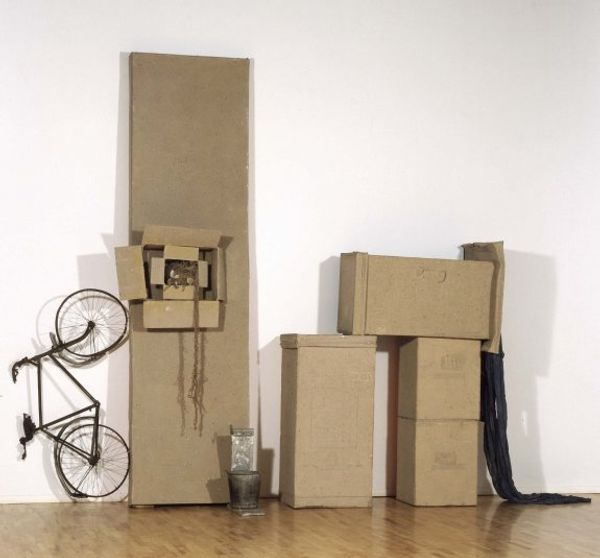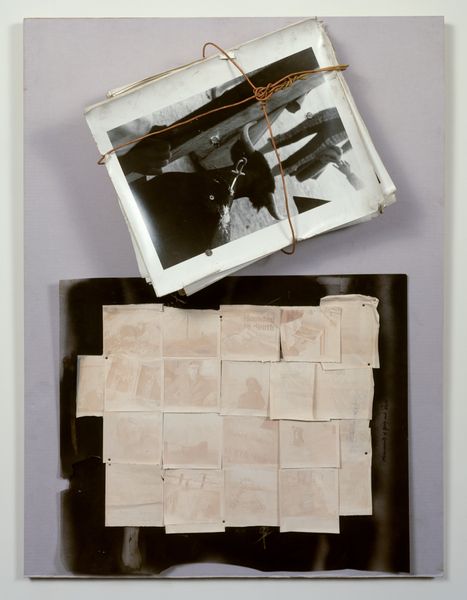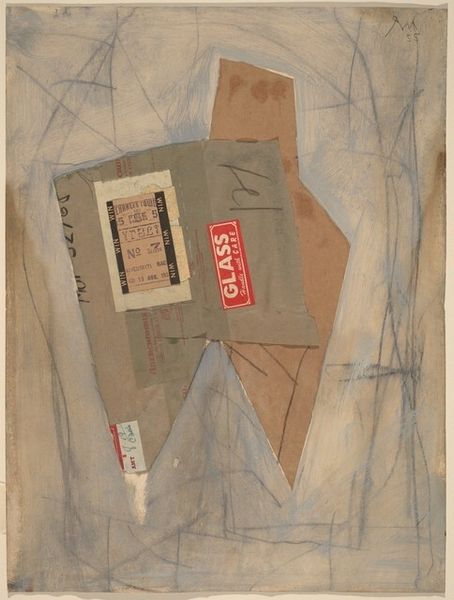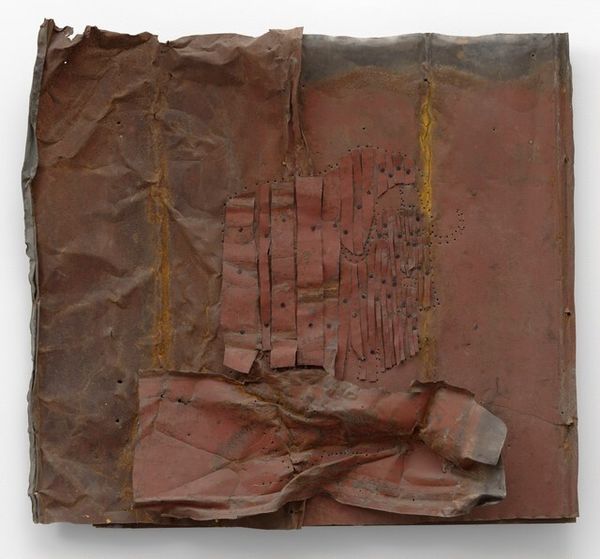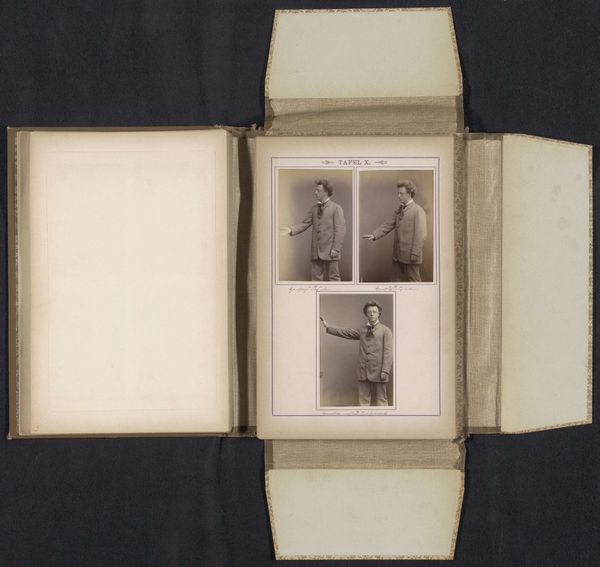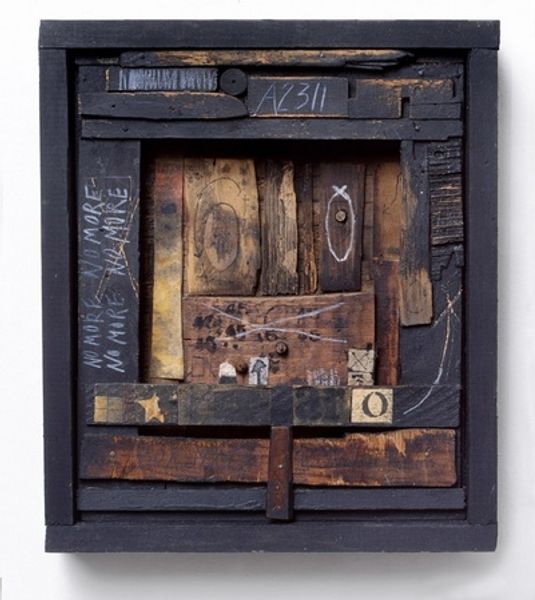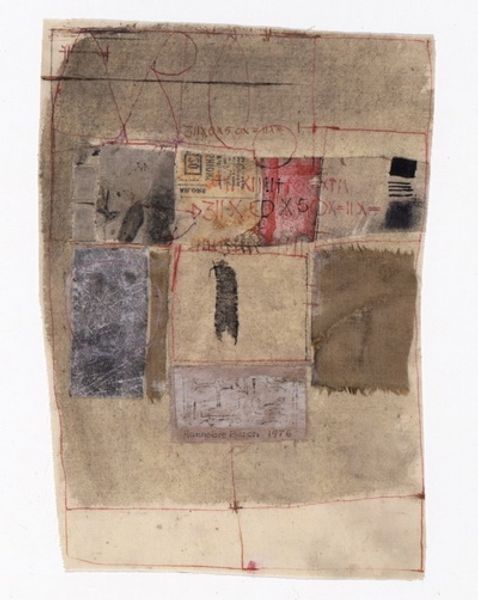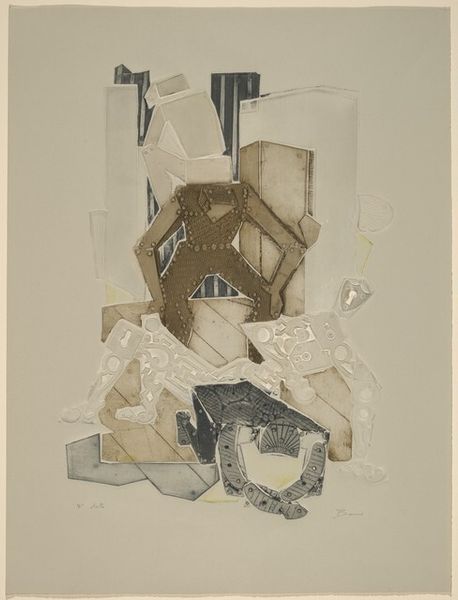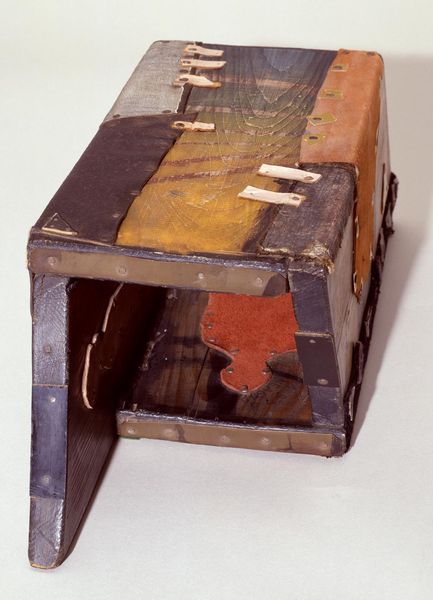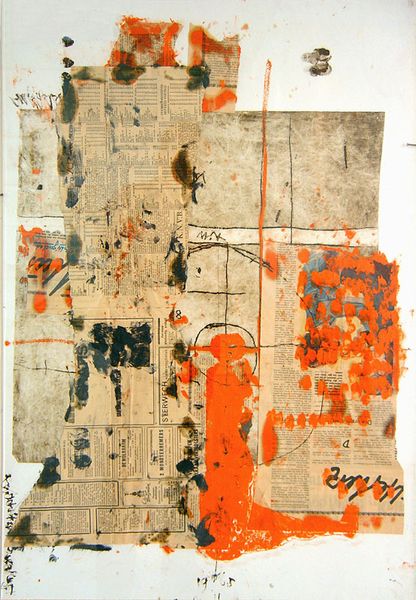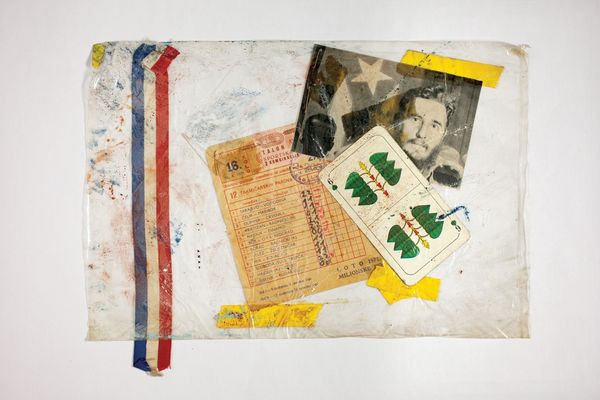
#
neo-dada
#
black-mountain-college
Copyright: © 2019 Robert Rauschenberg Foundation. All right reserved.
Editor: Here we have Robert Rauschenberg's "Plain Salt (Cardboard)," created in 1971. It's a mixed-media assemblage constructed entirely from cardboard boxes. What strikes me is its almost brutal simplicity and focus on everyday objects that are usually discarded. How do you interpret this work? Curator: This piece exists at the intersection of pop art and conceptualism, a direct commentary on consumer culture through the lens of found objects and readymades. Rauschenberg, in appropriating these 'Plain Salt' boxes, forces us to consider the cultural significance of the mundane. He is asking us to examine how capitalism commodifies even the simplest necessities and then discards their containers without a thought. What does the material - the cardboard itself - say about the ephemerality of modern life? Editor: That's interesting. It makes me think about the environmental impact of all this packaging, which is still an important topic today. Is it possible that he was also hinting at something like that? Curator: Absolutely. Remember, this was made in 1971, as environmental awareness was growing. The sheer volume of discarded boxes suggests a critique of wastefulness. And, who benefits from all this consumption? The repetitive "Plain Salt" branding points to the powerful forces behind mass production and the normalization of consumerism. Editor: So it's not just about art; it’s about the system behind it? Curator: Exactly. By displaying the discarded, Rauschenberg encourages us to interrogate the larger systems that create such waste. Editor: I never would have looked at a pile of cardboard boxes this way. Now, it seems to make a strong statement. Curator: The beauty of art is its ability to reframe our perspectives on the ordinary and push us to consider complex issues.
Comments
No comments
Be the first to comment and join the conversation on the ultimate creative platform.
